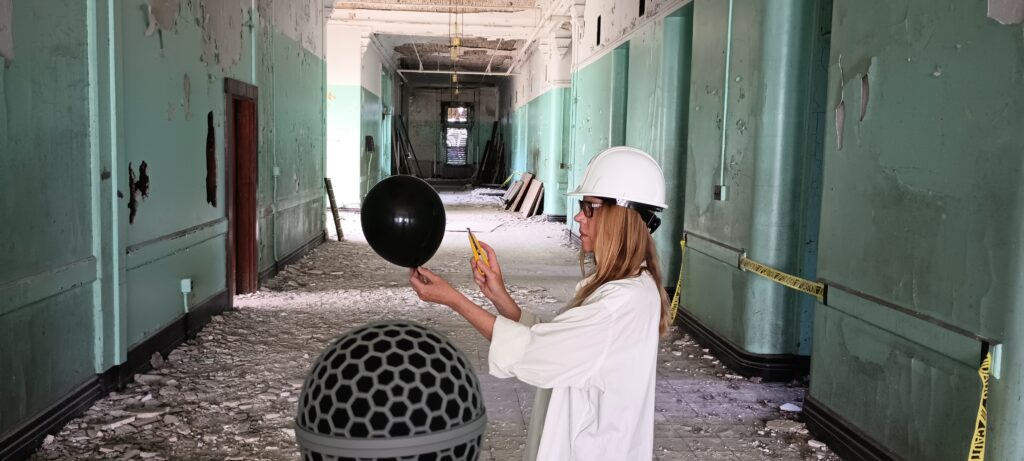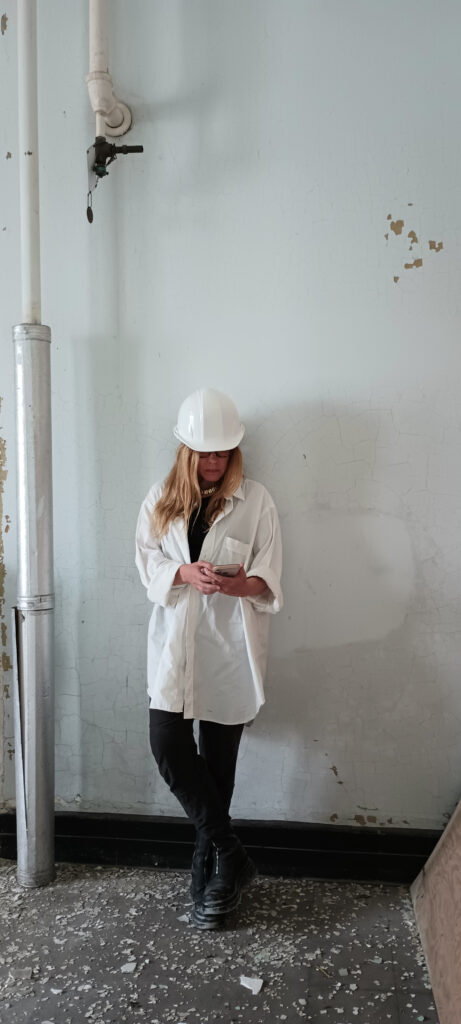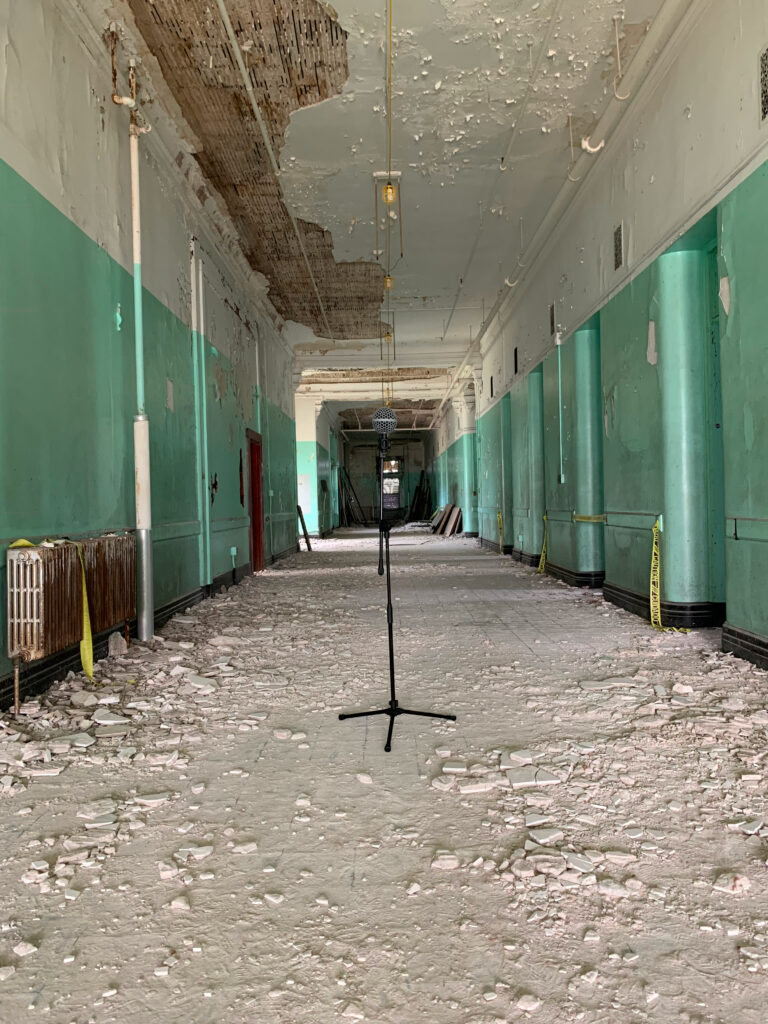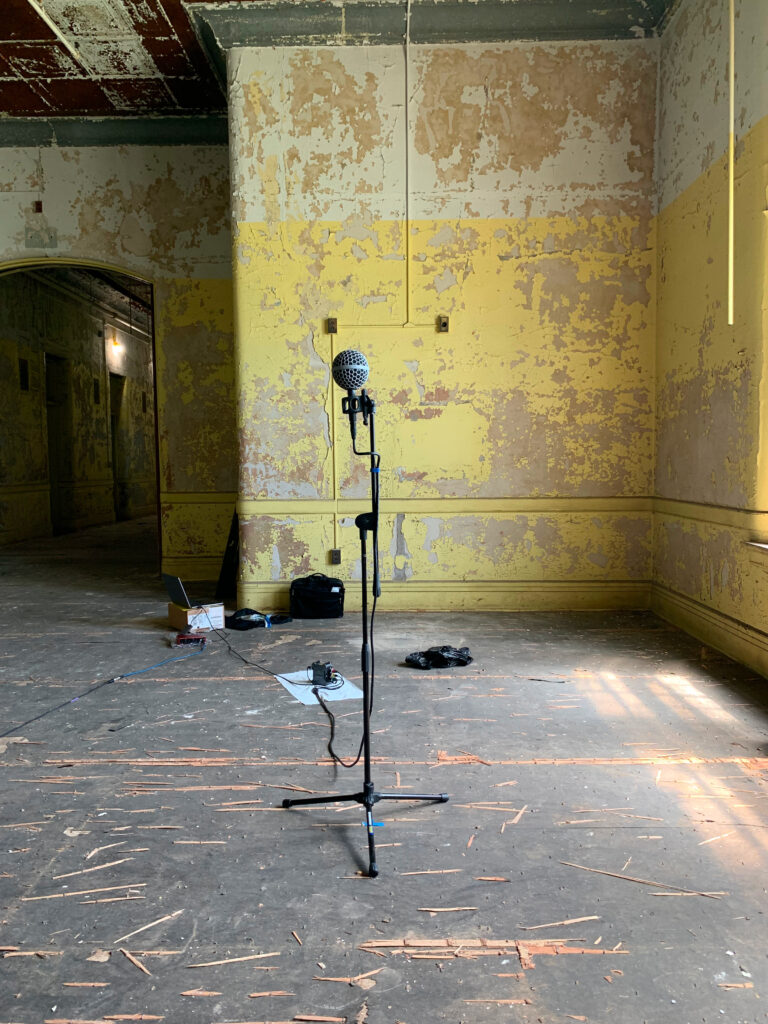Sound the Asylum
binaural resonant frequencies
Recorded and produced by Melissa Grey & David Morneau
Project Timeline (ongoing)
2023
November 3 – Presentation: Sensory Decay Symposium. ‘Sensing the Past’ Research Group, University of Amsterdam.
October 16-18 – Recording: The Ridges (formerly Athens Lunatic Asylum), Athens, Ohio.
September 22-24 – Installation: PreservationWorks 2023 Photography Benefit Tour. Richardson Olmsted Complex (formerly Buffalo State Hospital), Buffalo, New York.
August 9-11 – Recording: Richardson Olmsted Complex (formerly Buffalo State Hospital), Buffalo, New York.
Sound the Asylum, by composer-producers Melissa Grey & David Morneau, is a growing catalog of immersive audio documentation, recording the aural identity of decaying asylum interiors in 19th century Kirkbride Plan hospitals. We use an ambisonic recording technique to capture the activation of resonant frequencies in full 360º spatial surround. A series of recordings—each a recording of the previous iteration amplified by a loudspeaker—gradually reveal the humming resonance of a room’s dimensions and character.
These frequencies become part of the color of every sound activated in the space. It is an aural phenomenon that provides the ear spatial information. Our process captures the sounds in and around the asylum—summer insects, tolling church bells, and bits of decaying plaster falling to the floor. These sounds give a sense of place, immersing the listener in the sonic landscape of the resonating frequencies that would have softly imbued every sound of daily life for the patients, staff, and visitors in these buildings.
The innovative Kirkbride Plan, developed by psychiatrist Thomas Story Kirkbride, created therapeutic environments for the treatment of mental illness, providing unprecedented access to space, natural light and fresh air. Described as “America’s castles,” approximately 75 Kirkbride Plan hospitals were constructed throughout the United States and Australia, and only 36 of these massive hospitals remain standing today. We documented the Richardson Olmsted Complex (44,594 sq m) in Buffalo, New York, in August, and The Ridges (65,032 sq m) in Athens, Ohio, in October.


Access to buildings at the Richardson Olmsted Complex provided by
Lipsey Architecture Center Buffalo
• Paris Roselli (Executive Director)
• Patrick Ryan (Cultural Coordinator)
Access to buildings at The Ridges provided by Ohio University
• Shawna Wolfe (Associate Vice President University Planning)
• Chris Wilson (Manager University Access Control)






